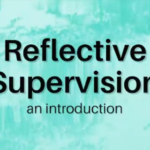So, you know you need a new website. Where do you start? There are countless website companies, most of which would be happy to work with your church. So if you already have a trusted relationship with one, there’s one in your community that you’d like to consider, or you receive recommendations from other churches or your parishioners, describe what you’re wanting and ask any website vendor for samples of their work and a bid.
The communications team is most often contacted by churches that have limited budgets and need pretty simple websites. If that’s you, there are two vendors we would lift up for your consideration; all three offer websites that are easy to update and offer all the key features a good church website should have—but note that someone within your congregation would need to create the website using the template, meaning you’d have to figure out which pages you want, write copy, gather photos, etc. This isn’t hard, but it does take some time. The recommended vendors are:
Aboundant: This company was started by a UMC deacon in Iowa, and it has emerged as a great low-cost and attractive option. The Minnesota Conference had a great experience working with this company to build our MNsource resource-sharing platform, our General Conference 2020 Host Team website, and our area Reach event website. There are three different templates for local church websites (template 1, template 2, and template 3), each of which is customizable. Aboundant has two plans—the basic website option is $180 a year, and a more robust option (that also includes email integration) costs $336 a year.
Ekklesia360: Several Minnesota United Methodist churches have had great experiences with this vendor, which specializes in working with congregations. Two of them are Community UMC in Monticello and White Bear Lake UMC, both of which have great websites. The cost for onboarding, training, and setup is a $500 one-time fee, plus $65-$185 a month on an ongoing basis, depending on how advanced the features you want are.
Wix: This website builder is simple, intuitive, and extremely inexpensive at $16 a month. You can drag and drop any feature you want to include on a page, and you don’t need to know any coding. At the very least, every church can and should have a basic website like this that includes worship times, its mission, key offerings, and some of the ways to get involved.
Steps to create your new or updated website
• If you have a website currently, go through it carefully to see which sections or information you feel are valuable and want to carry over to the new site—and which sections are outdated or need to be replaced or eliminated altogether.
• Whether or not you currently have a website, spend some time looking through your chosen website vendor’s sample sites and/or other church websites that you like to see which information is there and get some ideas for what you want to put on your own site.
• Select a person or a small team that’s responsible for writing and collecting content for the website and populating the template you choose. Be sure to involve the senior pastor, particularly when it comes to pages that talk about the core beliefs or theology of the church (which are good to have).
• Decide on which types of content you want on your website (sermons, newsletters, events, etc.) and map out the specific pages you want to include (for example, About, Staff, New Here, etc.)
• Collect some attractive photos showing the different facets of the life of your congregation—worship, specific ministries, children’s programs, community outreach, etc. If you haven’t taken a lot of photos, contact some of the most involved members and ask them if they have some photos they could share. Try to get the original photos rather than taking them from Facebook or other websites because the quality will be much higher.
• Have the small team write content for the pages you want to have (be sure to have someone proofread before you put it online), decide on photos for each page, and eventually populate the website.
• Designate someone (ideally a staff person, but a committed volunteer would work) to update the website on a weekly (or bi-weekly) basis. This includes uploading new sermons, newsletters, or events, as well as updating content as things change—like worship times and children’s ministry offerings, which are likely different during and outside of the school year. The fastest way to get people to stop coming to your website is to stop updating it, so create a plan to ensure that doesn’t happen.









